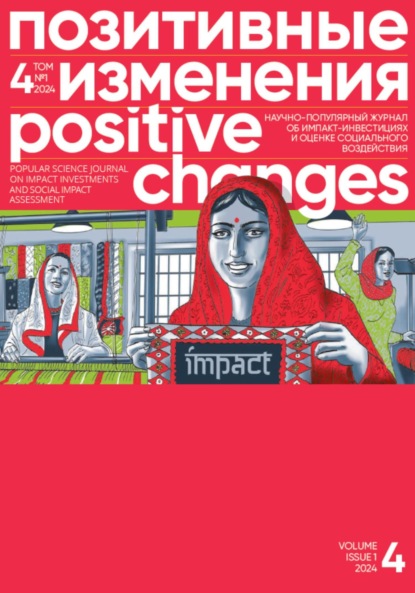Глеб призывает всех применять теорию изменений и получать удовольствие от того, как она открывает реальный взгляд на то, как работает социальный проект. «Приведу короткий пример. Мой первый социальный проект был про помощь учителям. Мы делали фестивали для учителей и учили их использовать IT на уроках. Знаете, какое для меня было откровение, что мой благополучатель – не учитель? А как вы думаете, кто? Правильно, ученик, конечно. Это для меня всё перевернуло – я понял, как работают социальные проекты», – добавил эксперт.
Ухоженный, чистый, безопасный, зеленый город… Здесь комфортно людям разного возраста, развито добрососедство, а домашние и даже бездомные животные чувствуют себя хорошо. В таком городе есть место творчеству, эксперименту и юмору. Локальный продюсер помогает авторам социальных инициатив воплотить свои идеи, а форсайт-модераторы и медиаторы спроектировать будущее территорий и услышать друг друга. Доступная среда создана для людей с любыми особенностями здоровья. А благодаря теории изменений авторы социальных проектов умеют планировать и оценивать импакт. Именно таким видят развитие городов и сообществ участники конференции. А каким его видите вы?
How Kind Is My City? Report from the “City and Community Development” Conference
How the dynamics of engaging with local communities are evolving, what lies ahead for them in the near and distant future, how collaborative initiatives between businesses and NGOs assist residents in fostering their localities, and what factors enhance the social efficacy of such endeavors – these were among the topics discussed by urban planners, NGOs, futurists, and business delegates at the City and Community Development practical conference held in Moscow in February 2024. Here, we explore the core insights regarding potential territorial development scenarios as perceived by experts.
Yulia Vyatkina
Editor, Positive Changes Journal
KIND CITIES
In 2023, the Commonwealth of Kind Cities, comprising over 220 territories, teamed up with the Civil Engineering Laboratory to conduct a survey among citizens and tourists across various Russian cities, aiming to address the question: What truly defines a city’s kindness in their eyes? The outcome of this research led to the formulation of a methodology[34 - Kind City Petersburg Charitable Foundation (2023). Methodology: How Kind Is My City? Retrieved from: https://konkurs.dobryegoroda.ru/metodika. (accessed: 16.03.2024).] grounded in the genuine needs and perceptions of city dwellers and visitors alike.
“We didn’t have any expectations about what people might reveal, something beyond our knowledge. Rather, we were interested in noticing the recurring themes. We conducted focus group research in Penza, Vladivostok, Irkutsk, St. Petersburg, and other locations. Our guide encompassed 40 questions. Drawing from the responses, we devised the methodology “How Kind Is My City/Town to Its Residents and Visitors.” We analyzed the feedback through the lens of what NGOs could feasibly undertake. This methodology serves as a sort of checklist[35 - The methodology self-assessment checklist can be viewed here: https://drive.google.com/file/d/1UKqJJDsm5w_FPKZxtL5DbwvQa7whjEzr/view.] for evaluating one’s city. Moreover, it is a catalyst to engage with partners and citizens during the project conceptualization phase, shedding light on areas where improvements are still needed within their communities,” says Daria Buyanova, Marketing Director of the Kind City St. Petersburg Charitable Foundation.
The creators of this methodology underscored the significance of non-profit initiatives delivering genuinely beneficial and sought-after projects for the city – endeavors that garner recognition and appreciation from residents and visitors alike, thereby enhancing their happiness and comfort and contributing to the city’s reputation as a benevolent entity.
The kind city methodology encompasses 10 parameters. The authors assert their universality, applicable irrespective of a municipality’s size or geographical location. For instance, the first parameter, “Proud of Heritage and Its Preservation,” extends beyond cities boasting rich historical legacies, also encompassing single-industry towns with three decades of history that cherish their heritage.
The essence of this parameter is the city’s reverence for its history and culture. Historic landmarks are either restored or just maintained well, looking tidy. Many historical sites serve communal functions and are accessible to the public. Attention to detail is important: original signage is refurbished, architectural trimmings and plaques are preserved, and lost elements are recreated. Residents and visitors alike are acquainted, or can readily acquaint themselves, with the city’s history.
Key areas of focus include the restoration and upkeep of historical landmarks, the aesthetic appeal of these sites, the preservation of historical nuances in the urban landscape, as well as initiatives aimed at their conservation and promotion.
Вы ознакомились с фрагментом книги.
Для бесплатного чтения открыта только часть текста.
Приобретайте полный текст книги у нашего партнера:








 Рейтинг:
0
Рейтинг:
0